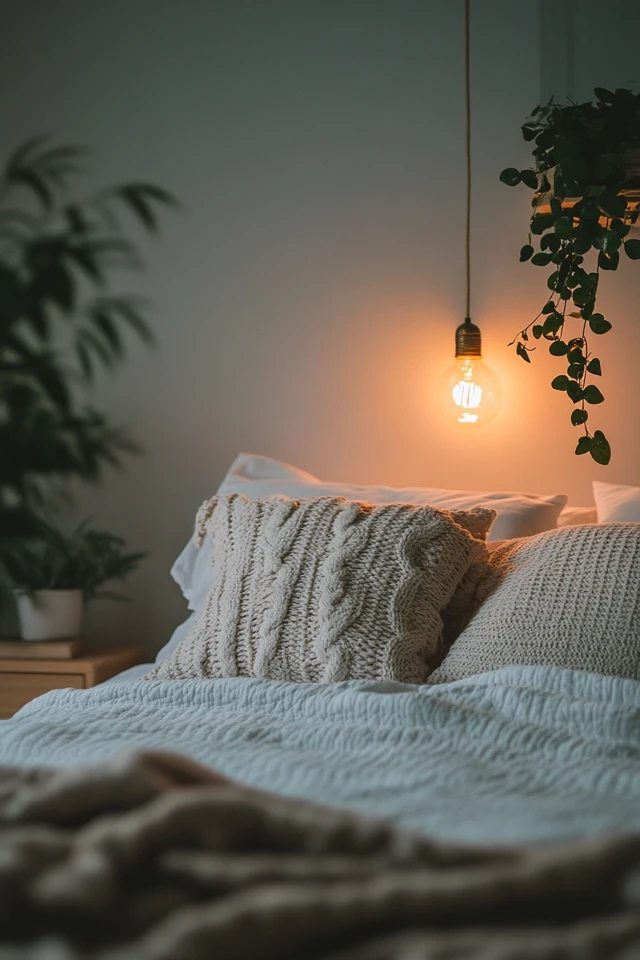Introduction
There’s nothing quite like a good night’s sleep. But if you’re anything like I was, your room might not be doing you any favors in the relaxation department. A few years ago, I found myself tossing and turning every night, wondering why I just couldn’t unwind. That’s when I realized my room wasn’t set up for rest—it was cluttered, too bright, and not exactly calming. I decided to overhaul the space, focusing on soothing colors, soft textures, and the right lighting. It was a game-changer. My bedroom became a haven, and falling asleep became as easy as closing my eyes.
Designing a sleep-inducing room isn’t about spending a fortune or following rigid rules. It’s about creating an environment that feels calm, cozy, and distraction-free. Here are 10 simple yet effective ways to turn your room into the ultimate retreat for restful sleep.
Why a Sleep-Inducing Room Matters
Key Benefits
- Improves Sleep Quality: A well-designed space encourages deeper, more restful sleep.
- Reduces Stress: A calming environment helps quiet your mind at the end of the day.
- Enhances Relaxation: Soft textures and soothing lighting make your room a true sanctuary.
- Supports Overall Health: Quality sleep improves focus, mood, and physical well-being.
1. Choose a Soothing Color Palette
Why It Works
Calm, neutral tones help your mind unwind and prepare for sleep.
How to Do It
- Use soft blues, greens, or grays, which are scientifically proven to promote relaxation.
- Incorporate earthy neutrals like beige, taupe, or cream for a warm, cozy feel.
- Avoid overly bright or bold colors, which can overstimulate your senses.
- Use darker shades, like navy or charcoal, as accents to create depth without overwhelming the space.
2. Invest in Comfortable Bedding
Why It Works
The right bedding makes your bed a haven of comfort, helping you relax faster.
How to Do It
- Choose high-quality sheets made from breathable fabrics like cotton, linen, or bamboo.
- Use a plush duvet or comforter that suits the climate and your sleeping preferences.
- Layer your bed with soft throws and supportive pillows for added coziness.
- Replace old, worn-out mattresses or pillows to improve comfort and support.
3. Control the Lighting
Why It Works
Dim, warm lighting signals to your brain that it’s time to wind down.
How to Do It
- Install dimmable lights or use smart bulbs that allow you to adjust brightness.
- Add warm-toned bedside lamps for reading or relaxing before bed.
- Use blackout curtains or shades to block out external light.
- Avoid harsh overhead lighting in the evening, opting instead for softer, diffused light sources.
4. Declutter Your Space
Why It Works
A clean, organized room helps calm your mind and reduces nighttime anxiety.
How to Do It
- Clear surfaces like nightstands and dressers, keeping only essentials like a lamp or a book.
- Use storage solutions like baskets, bins, or under-bed storage to keep clutter out of sight.
- Create a dedicated space for work or hobbies to keep them separate from your sleeping area.
- Regularly tidy up to maintain a peaceful, minimalist environment.
5. Incorporate Calming Scents
Why It Works
Aromatherapy can help reduce stress and prepare your mind for sleep.
How to Do It
- Use a diffuser with essential oils like lavender, chamomile, or cedarwood.
- Light scented candles in relaxing fragrances, such as vanilla or jasmine, before bed.
- Place dried herbs or sachets, like lavender or eucalyptus, near your pillows or drawers.
- Try a linen spray with calming scents to freshen up your bedding.
6. Use Noise-Blocking or Soothing Sounds
Why It Works
Eliminating disruptive noises and adding soothing sounds helps you fall asleep faster.
How to Do It
- Use a white noise machine or a smart speaker to play calming sounds like rain or ocean waves.
- Invest in soundproofing solutions like heavy curtains or rugs to reduce outside noise.
- Play gentle music or guided meditations to lull yourself to sleep.
- If you’re in a noisy environment, consider earplugs or noise-canceling headphones.
7. Add Soft, Layered Textures
Why It Works
Cozy textures create a cocoon-like environment that feels warm and inviting.
How to Do It
- Layer your bed with knit or fleece throws for extra softness.
- Add a plush area rug next to your bed to make mornings more comfortable.
- Incorporate velvet or quilted pillows for a luxurious touch.
- Use natural fabrics like linen or cotton for a breathable, soothing aesthetic.
8. Minimize Technology
Why It Works
Reducing screen time before bed helps your mind unwind and promotes better sleep.
How to Do It
- Keep phones, tablets, and laptops out of the bedroom or at least away from the bed.
- Use an old-fashioned alarm clock instead of relying on your phone.
- Avoid watching TV or working in bed to maintain a clear boundary between rest and activity.
- Enable blue light filters on your devices if you must use them in the evening.
9. Adjust the Temperature
Why It Works
A cool, comfortable room temperature helps your body relax and fall asleep faster.
How to Do It
- Set your thermostat to 65–70°F (18–21°C), the optimal range for sleep.
- Use breathable bedding to prevent overheating.
- Add a fan or air purifier to keep the air circulating and maintain a comfortable environment.
- Keep extra blankets nearby for colder nights.
10. Create a Bedtime Ritual
Why It Works
A consistent bedtime routine helps signal to your brain that it’s time to relax and prepare for sleep.
How to Do It
- Spend 10–15 minutes doing calming activities like reading, journaling, or meditating.
- Dim the lights and turn off electronics at least an hour before bed.
- Use your favorite calming scents or sip on herbal tea to wind down.
- Play soft music or background sounds to create a serene atmosphere.
Picture Gallery
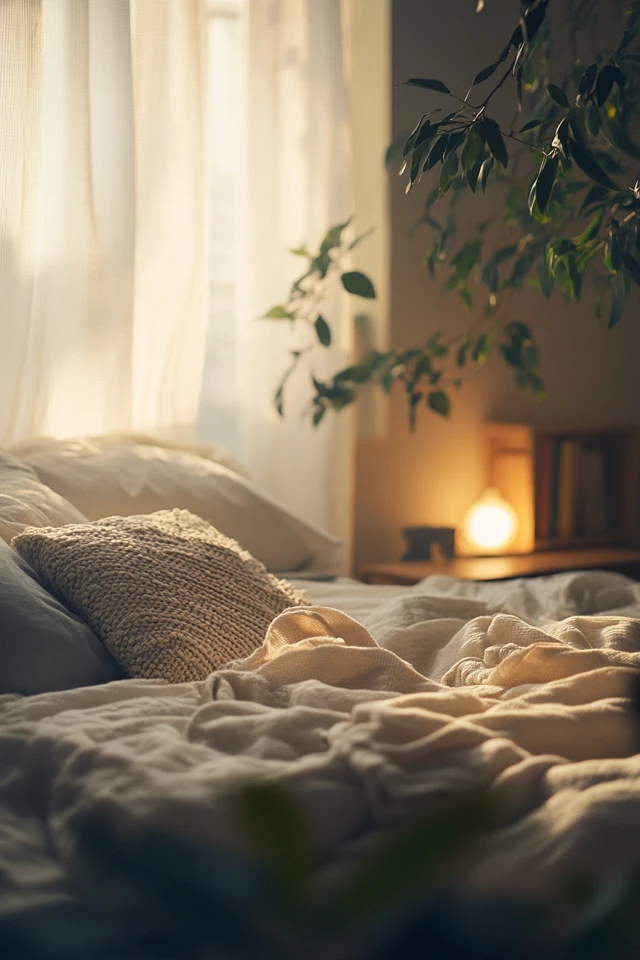

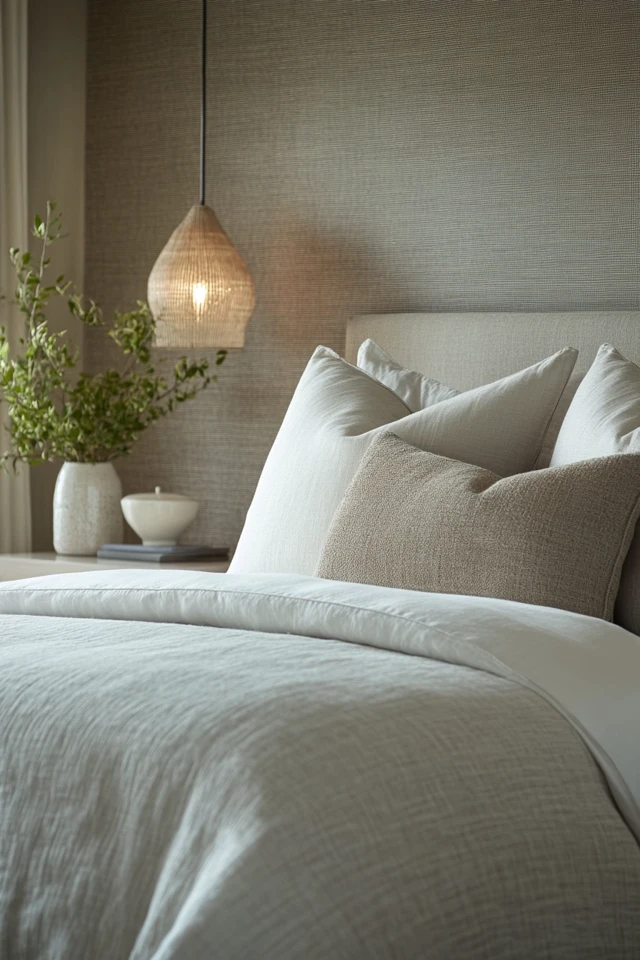
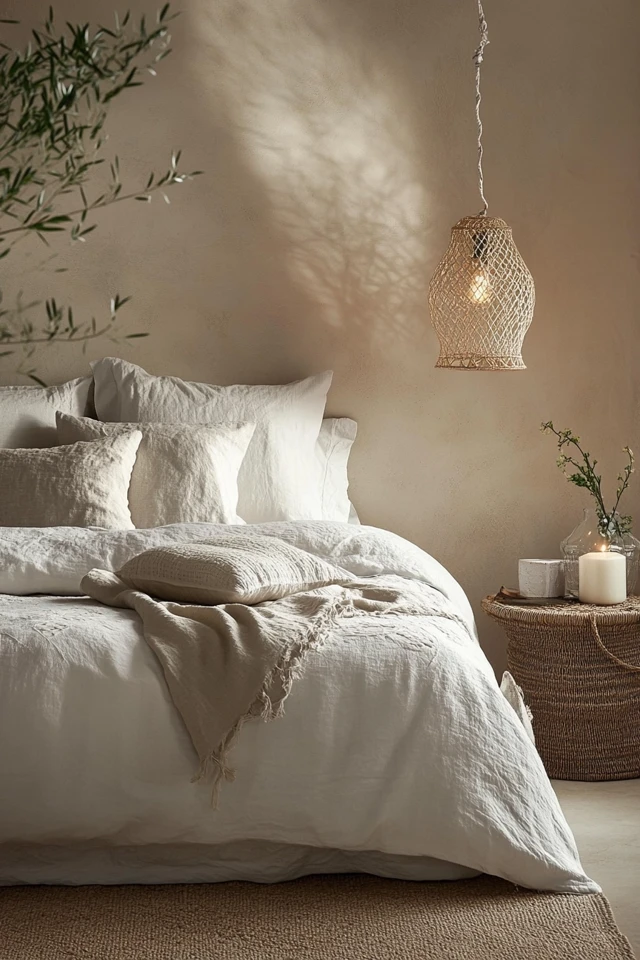
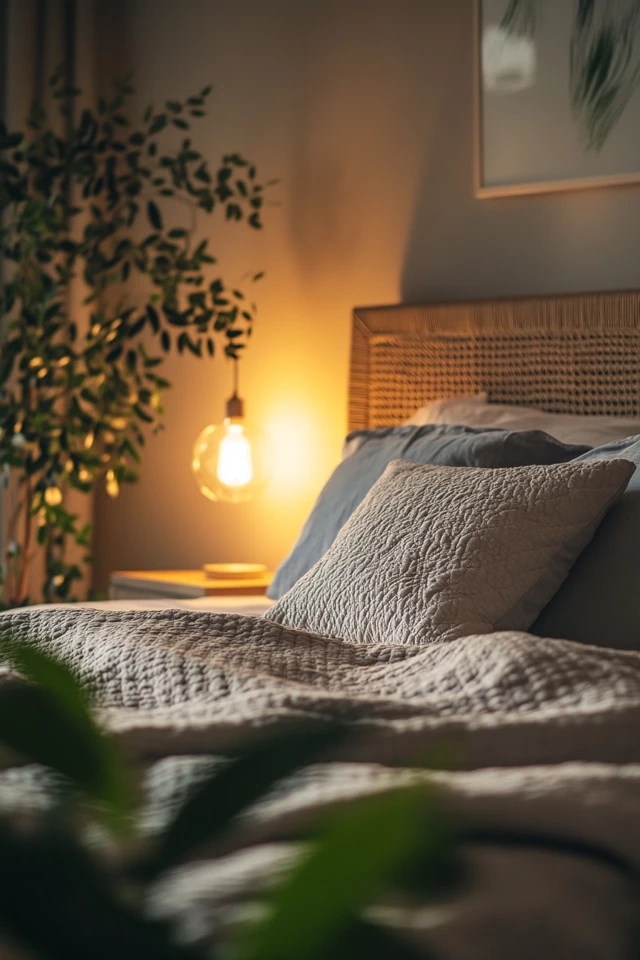
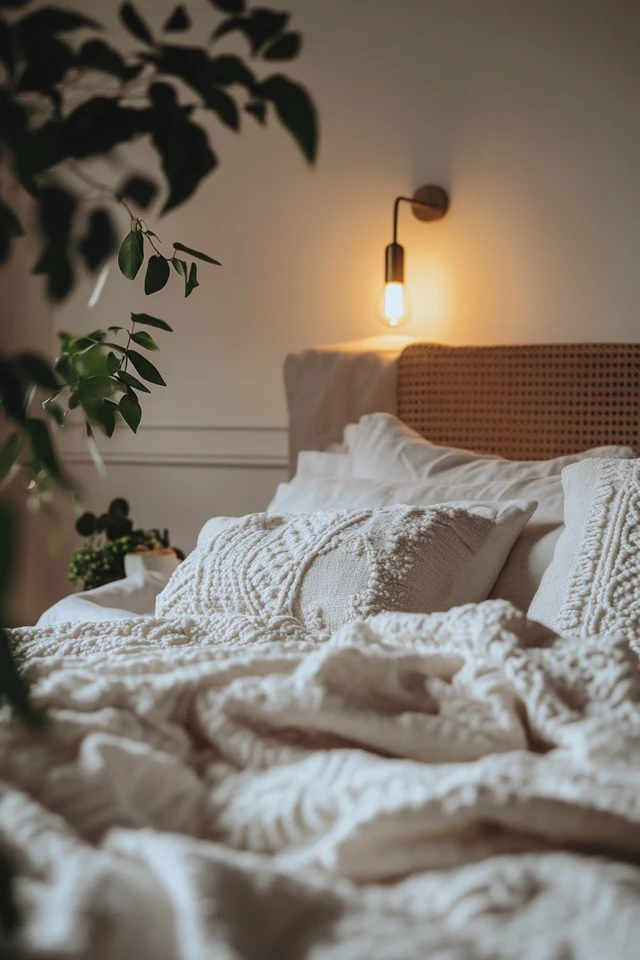
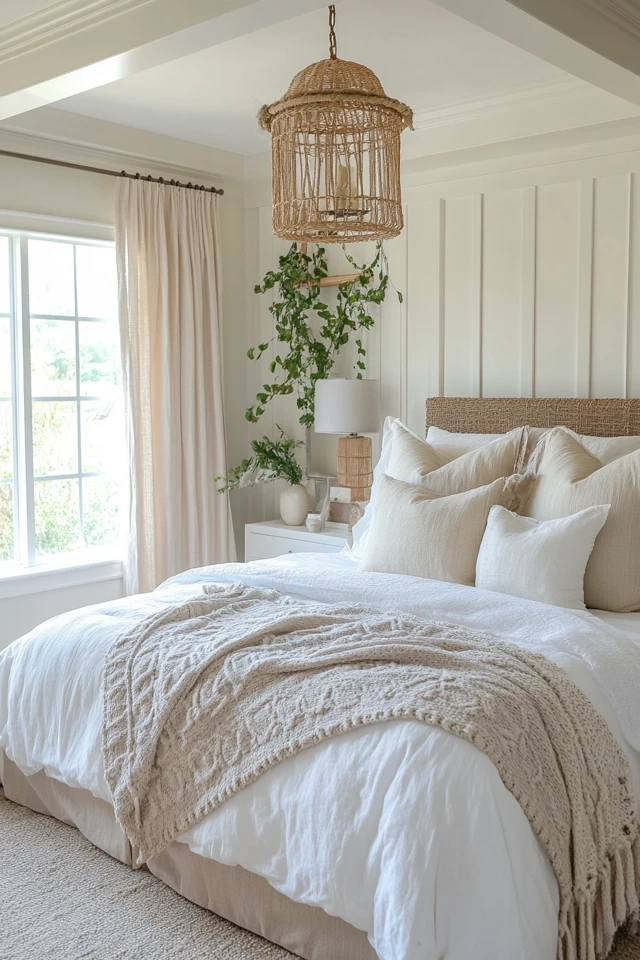
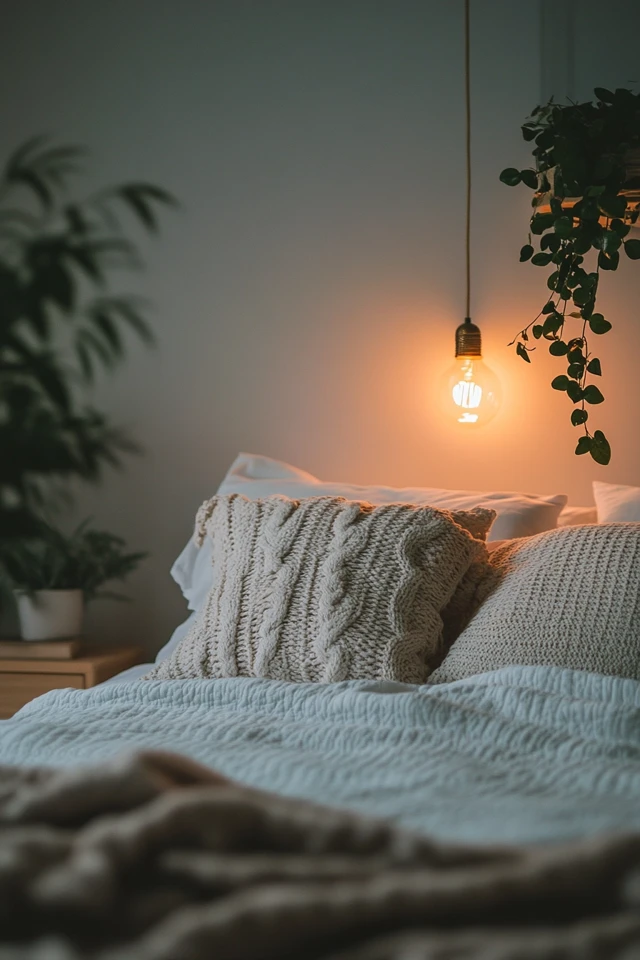
Conclusion
Designing a sleep-inducing vibe room is all about creating a space that feels serene, comfortable, and perfectly tailored to your relaxation needs. From choosing the right colors and lighting to incorporating soft textures and calming scents, every detail works together to promote better sleep.
What I love most about this process is how transformative it can be—not just for your room, but for your overall well-being. So, dim the lights, fluff those pillows, and prepare to drift off into the best sleep of your life.
FAQ
What colors are best for a sleep-inducing room?
Soft, muted colors like pale blue, sage green, or light gray are ideal for promoting relaxation and sleep.
How can I create a calming bedroom on a budget?
Focus on decluttering, adding soft lighting, and incorporating inexpensive elements like scented candles, throw blankets, or thrifted decor.
What’s the best lighting for a bedroom?
Warm-toned, dimmable lights are perfect for creating a relaxing, sleep-friendly atmosphere. Avoid harsh, bright lighting in the evening.
How do I block out noise in a noisy environment?
Use heavy curtains, a white noise machine, or noise-canceling headphones to eliminate disruptive sounds.
Can I use technology in a sleep-inducing room?
It’s best to limit screens in your bedroom. If you must use devices, enable blue light filters and avoid them at least an hour before bed.

